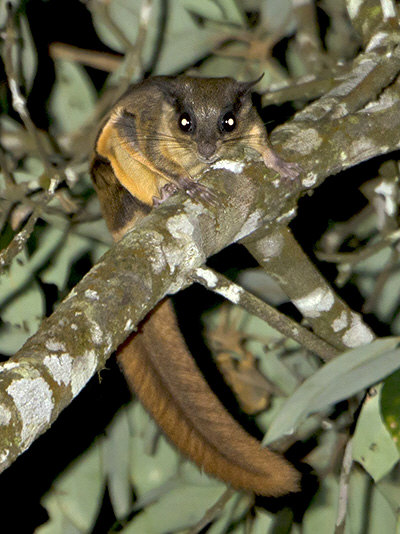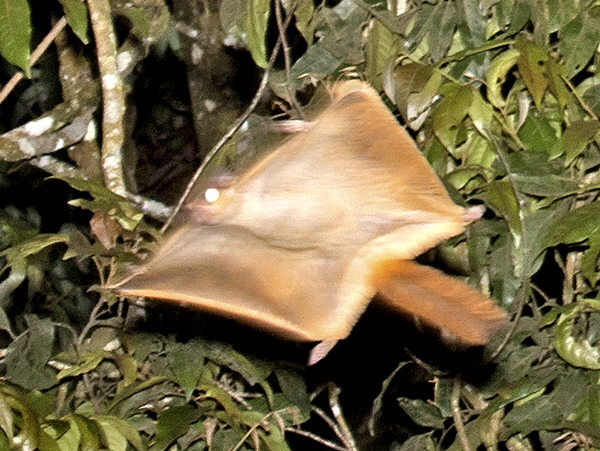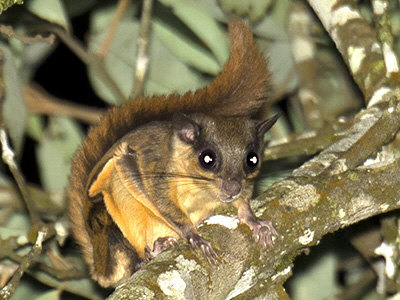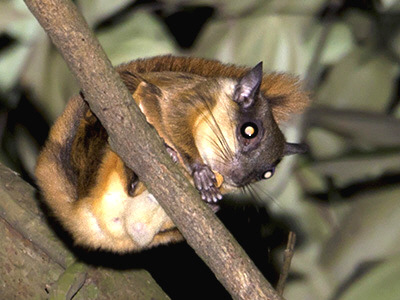
Fig 1

Fig 2

Fig 3

Fig 4
|
Order : RODENTIA
Family : Sciuridae
Species : Iomys horsfieldii
Head-Body Length : Up to
19 cm
Tail Length : Up to 18 cm
Weight : Up to 165 grams
Play call
►
Horsfield's Flying
Squirrel, or Javanese Flying Squirrel, is a medium-sized flying squirrel
which occurs in a range of habitats including primary forest and poor secondary
forest.
It is considered to be an adaptable species which may consume a range
of seasonal food items, but predominantly fruits. It may occur in areas
where fruit trees were once planted by villagers, but which are now
abandoned and have reverted to secondary forest.
Contrary to Thorington et al (2012), who suggested the species many now be
extinct in Singapore, it is still in fact fairly common in secondary forest
in the centre of the main island of Singapore, both in the areas designated
as nature reserve and in neighbouring regrowth forest.
This species appears to be fully nocturnal, only emerging from its treehole
after nightfall. At such times its presence in the forest can be ascertained
by its loud call, which can be heard from some distance. The call is a
short, downwardly-inflected bark rather like that of a small dog.
Play call
►
Its fur is brown on the back, and orange or whitish beneath the gliding
membrane or patagium. The tail, which is flattened like a feather, is orange to reddish. Its ears are relatively
large, and upward-curving, and there is typically a dark eye ring.
Horsfield's Flying Squirrel occurs in Peninsular Malaysia, Singapore,
Sumatra, Java and Borneo. Thorington et al (2012) recognise four subspecies.
Figs 1 and 3 : Typical example of Horsfield's Flying Squirrel from Peninsular Malaysia at an elevation of 1100 metres. This
specimen, along with more than 20 others, was attracted to the presence of
abundant acorns in an area of forest dominated by oak trees (possibly Quercus
gemelliflora).
Fig 2 : This species can glide effortlessly and efficiently for many tens of
metres, without significant loss in height.
Fig 4 : Male specimen from Singapore's central forests, consuming a small, soft,
pulpy fruit.
References :
Thorington Jr., R. W., Koprowski, J. L., Steele, M. A., Whatton, J. F. 2012.
Squirrels of the World. John Hopkins University Press, Baltimore.
|